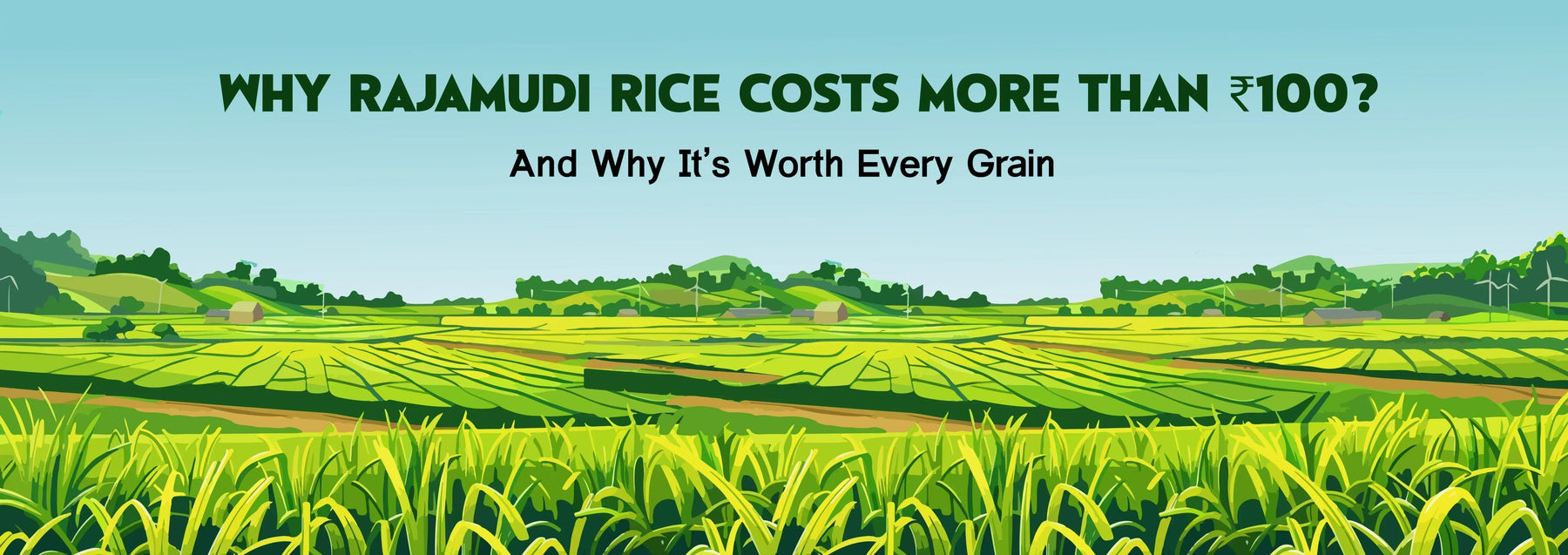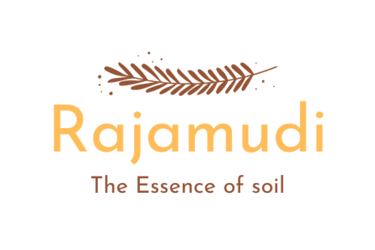
Why Rajamudi Rice Costs More Than ₹100? And Why It’s Worth Every Grain
“Heyy, ₹139 for a kilo of rice? Seriously?”
That’s what my cousin exclaimed at dinner last week as Amma placed the new packet of Rajamudi rice on the table.
A stunned silence fell over the rasam and roasted papad.
He looked at the price tag, then at his plate crumbs of ghee-drenched red rice clinging to his grin:
“Are we paying more for health, or for hype?”
That simple question sparked a deeper conversation that night:
Let’s unpack the answer - one grain, one family, one truth at a time.
A Grain With History, Not Just Hype
Rajamudi is no ordinary rice.
This heirloom rice variety has its roots in Karnataka’s royal kitchens hence the name “Raja-mudi”, literally translating to the king's crown. Grown traditionally in Mandya, Mysuru, and Hassan districts, it nearly vanished from our plates before organic farmers began reviving it.
During the lockdown years, health-conscious buyers rediscovered this grain. Suddenly, what was once sold at ₹50/kg in local mandi’s saw its demand soar. But supply didn’t.
Which brings us to the next chapter…
Why Supply Struggles to Keep Up?
Rajamudi isn’t mass-farmed like polished white rice. It’s grown in small batches, in rain-fed fields, without synthetic shortcuts. That means:
Most growers are smallholders who farm on trust, not subsidy.
This rice doesn’t respond to irrigation-heavy tricks. One bad monsoon = one tough season.
Minimum Support Prices (MSPs) rise slowly, and heritage grains like Rajamudi are left out of most agricultural safety nets.
So, while demand climbs, supply can’t sprint to catch up. And unlike factory-finished polished rice, Rajamudi is hand-grown, hand-cleaned, and semi-polished at most making each grain feel like it was grown with intent.

At Rajamudi Organics, we’ve priced our Rajamudi Rice at ₹139/kg and here's why.
What You’re Really Paying For?
We could’ve priced it lower. But then we’d have to cut corners. And we won’t do that.
You’re paying for:
You’re not just buying rice. You’re voting for a better food system.
Check the benefits of Rajamudi Rice:

“But I Saw Rajamudi at ₹90 Online…”
You probably did. And yes, some retailers sell non-organic or mass-farmed versions of Rajamudi at lower rates.
But those often come from unverified sources, may be polished and stripped of nutrients, lack traceability or testing and don’t pay the farmer fairly.
At Rajamudi Organics, our ₹139 reflects the true cost of doing food right ethically, organically, and with full transparency.
From Our Farm to Your Plate
This rice travelled from our own fields, through the hands of a farmer who refused conventional growing, to your kitchen. It’s not just about price, it’s about intention.
And yes, it costs more than ₹100. But for every grain, there’s value you can taste and trust.
Try a Pack Today!

